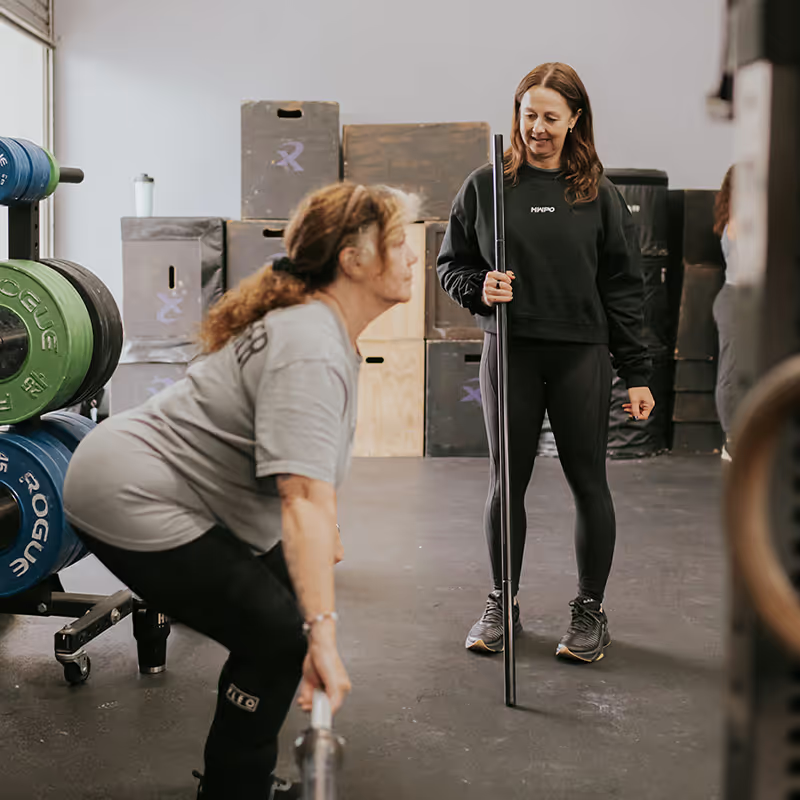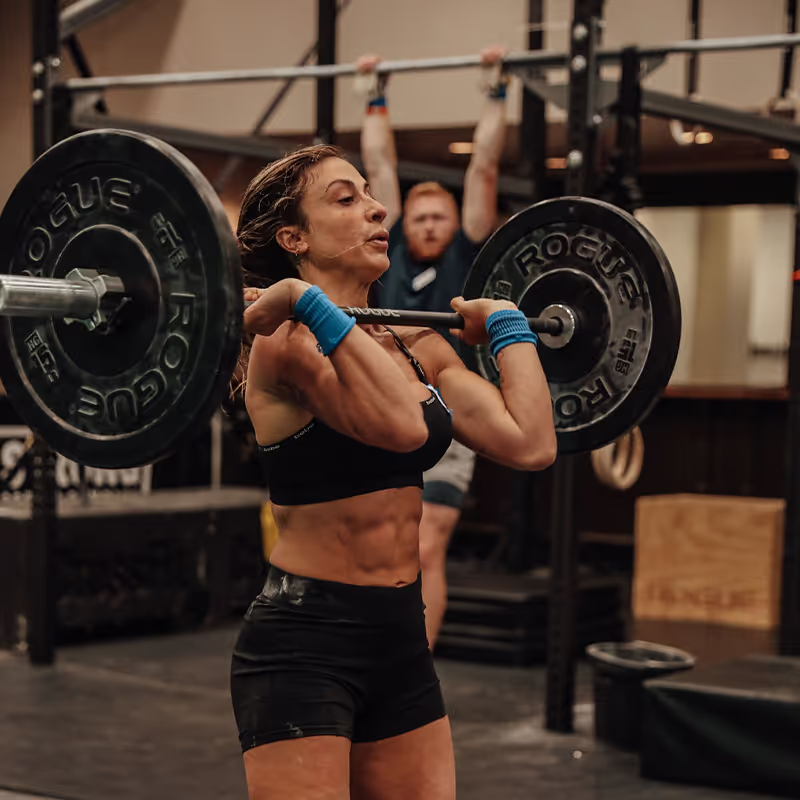When to Use Weightlifting Straps in Olympic Lifting
Weightlifting straps are used plenty in Olympic lifting, but are you using them the right way? In this blog, we break down what straps are, when they’re helpful, and when they might be holding you back. Whether you’re rehabbing an injury, dealing with grip fatigue, or just trying to train smarter, this guide will help you make the most of straps without relying on them too much.
Aug 19, 2025
What Are Weightlifting Straps?
Weightlifting straps are specialized accessories used to aid the lifter during training. They are typically made of durable materials like cotton, nylon, or leather. They are designed to secure around the wrists and the barbell, providing additional support at times the lifter needs to rest their hands/grip. While not a traditional piece of Olympic Weightlifting gear, they are popular among weightlifters and strength athletes for their ability to facilitate lifts when grip fatigue becomes a limiting factor.
Why Use Weightlifting Straps?
In Olympic weightlifting, maintaining a proper and strong hook grip is crucial for performing and controlling the barbell in the snatch and clean and jerk efficiently. Straps help reduce grip fatigue, especially during pulls, deadlifts, or hang variations in the snatch, allowing athletes to maintain control of the bar longer. They can also assist in managing grip weakness or fatigue that might otherwise compromise form or safety, for example, if the lifter has torn a callous. Additionally, straps can help lifters focus more on technique and the movement patterns in such lifts as a hang snatch, rather than solely on holding on to the bar or their grip slipping.
When to Use Weightlifting Straps
While Olympic weightlifting traditionalists often prefer to rely on raw hookgrip strength, straps are commonly used in training sessions. Here’s when they are typically used:
- Training Complexes: When performing snatch complexes that include a variation of a hang snatch, or a lifter is doing hang snatches or block snatches, where grip fatigue might inhibit performance.
- High-Volume Work: During high-rep sets or volume training, to prevent grip from limiting progression, or hands from becoming sore or torn, which affects the rest of the training week.
- For Specific Exercises: Such as snatch or clean pulls, deadlifts, or shrugs, where grip endurance is taxed.
- Rehabilitation or Injury Recovery: To reduce strain on the hands or wrists if an injury is present, or if the athlete has torn their hand.
It’s important to note that straps are prohibited in competition and should not be used in cleans, as the clean requires a secure grip for quick, precise movement. I discourage using straps in cleans, as it is challenging to get out of the straps quickly in the case of a miss, and can lead to injury as the elbow and wrist get trapped between the barbell and the knee or quad.
How to Use Weightlifting Straps
Proper technique when using straps is essential to ensure safety and effectiveness:
- Wrap the Strap: Loop the strap around your wrist, then around the bar, ensuring it’s snug but not too tight to restrict circulation.
- Positioning: The strap should be wrapped so it doesn’t interfere with your grip or wrist mobility. Typically, the tail end of the strap is wrapped around the bar, with the free end secured tightly.
- Grip the Bar: Once wrapped, grip the bar firmly with your hands, feeling the support of the straps. Some lifters can still hook grip even in straps, while others can’t. It is dependent on how big the lifter’s hands are. It is okay to NOT hook grip while using straps.
- Lifting: Maintain proper form during your lift, using the straps mainly for grip support rather than relying solely on their assistance.
- Removing the Straps: After completing the lift, relax your hands and carefully unloop the straps to avoid jerking or losing control of the bar.
My personal thoughts on straps
While straps can be a helpful tool in training, they’re not without drawbacks. Used too often or in the wrong context, they can hold lifters back from developing essential grip strength and confidence. Here's where I stand on when they help—and when they hurt.
Detract from Developing Grip Strength: Using straps can mask, or even hinder, a lifter’s true grip strength, an important aspect of Olympic lifting. Straps are not allowed in competition, and sometimes a lifter uses straps so often in training that when it comes time for competition, they are not able to hold on to the bar at heavier percentages. Straps can also become a crutch for athletes, as it allows them to perform the lift more easily. The lifter comes to rely on straps mentally and feels like they can’t perform the lift without straps. I want a lifter to not only develop a firm hook grip, but to trust and rely on their hook grip with confidence.
Techniques and Form: Proper technique relies on a secure, tight hook grip directly on the bar. Straps can alter a lifter’s natural grip and wrist positioning, potentially affecting lift mechanics and overhead positioning. Straps can also slow down a lifter’s turnover or transition under the bar, as they rely on straps rather than intentionally controlling the bar.
Grip Endurance Development: Regularly lifting with straps can inhibit the development of grip strength endurance. Building grip strength is integral to overall lifting ability, especially for heavy, maximal lifts.
When I Allow Straps: I allow my athletes to use straps during hang snatch variations, especially in complexes, during snatch or clean pulls and deadlifts. I discourage my athletes from ever using straps in snatches from the floor unless they have an injury to their hand or wrist, or a torn callous, in which case using straps will help them still be able to train. I never allow my athletes to use straps in cleans or jerks.



Build real strength from the ground up
Train smarter, lift stronger. HWPO LIFT is built to develop strength, grip confidence, and technical precision.






